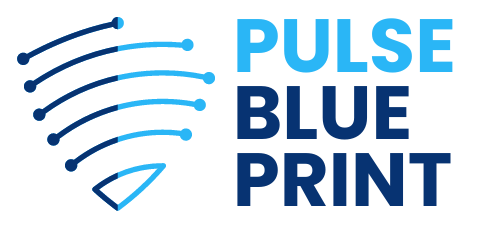There’s a certain comfort in seeing the start of a customer’s journey. It feels clear-cut. You can point to that first ad click or search and say, “That’s where it all began.”
And for many marketers, especially those trying to get a grip on what’s actually driving revenue, that’s enough reason to focus their dollars on what lit the fuse.
That’s where first-click attribution comes in.
It’s a popular model, particularly for brands trying to grow awareness fast. But while it has its place, relying too heavily on it can send your marketing budget in a direction that doesn’t match how real people actually buy things. Let’s break down why.
What Is First-Click Attribution?

In first-click attribution, 100% of the credit for a sale goes to the very first interaction a customer has with your brand.
Doesn’t matter if they later click an email, revisit via organic search, or finally convert through a retargeting ad—first-click says: “None of that counts. We’re giving the win to the intro.”
Quick Example
With first-click attribution, the podcast ad gets all the credit for the sale. Everything else—the retargeting, the email, the site experience—gets ignored.
It’s a clean model. It’s simple. And that’s both its strength and its biggest problem.
How It Shapes Budget Decisions

1. Puts Top-of-Funnel Channels in the Spotlight
By design, first-click attribution favors awareness channels—the platforms that introduce people to your brand. Think:
If these are the first touchpoints people click, they’ll look like rockstars in your reporting.
So what happens next? Your budget often follows the credit. More money goes toward those top-of-funnel channels, sometimes at the expense of the tools and touchpoints that actually push customers to buy.
2. Leaves Retargeting and Nurture Channels Starving
Email marketing. Google retargeting. On-site chat tools. Webinar follow-ups. These are the slow-burn channels that move people from “I’m interested” to “Take my money.”
But in a first-click model, they show up as spectators, not players.
Even if they are absolutely critical to closing the sale, they’re invisible in your attribution reporting, so they risk budget cuts or getting overlooked in favor of channels that simply start the journey. Let’s say you’re a B2B software company:
First-click gives all the credit to LinkedIn. But in reality, the LinkedIn ad just got them in the room. Everything else closed the deal. Ignoring those middle and bottom-funnel channels? That’s risky.
Why It Doesn’t Always Reflect Real Life

People don’t buy like they used to. The funnel isn’t straight anymore—it loops, swerves, and circles back.
- High-value buyers engage with an average of 7 marketing campaigns before purchasing.
- Most people recall at least three different touchpoints that influenced their decision.
So, if you’re only crediting the first one? You’re missing the full picture.
Another Red Flag?
Up to 90% of conversions may go unattributed to first-click channels. That’s a huge blind spot.
Your team might be pumping budget into the first-click star performers while missing out on the actual conversion drivers.
First-Click vs. Other Attribution Models
Here’s how first-click stacks up next to the alternatives:
Attribution Model
How It Works
Budget Impact
First-Click
100% of credit goes to the first interaction
Favors awareness spend, underfunds conversion support
Last-Click
All credit goes to the final interaction
Overfunds closers, underplays early brand discovery
Multi-Touch
Shares credit across all touchpoints
Balanced distribution, better for full-funnel strategies
Linear
Divides credit evenly among all steps
Good for transparency, but can blur precision for top performers
When First-Click Does Make Sense
View this post on Instagram
Despite its flaws, first-click attribution isn’t useless. In fact, there are scenarios where it’s a solid choice.
Best for New Brands
Startups or brands in early growth phases need to know what’s getting them noticed. First-click tells you where people are entering your world.
It helps answer questions like:
- Are your Google Ads pulling people in?
- Which social platforms are creating the most new interest?
- Are referral links converting at all?
For early-stage campaigns focused on discovery, it’s helpful—especially when budgets are tight and you need to double down on what’s working.
Even in short impulse journeys, a quick check with a detector de ia can confirm that first-click genuinely equals last-click.
Simpler Journeys
If your customer journey is short—say, a single-visit impulse buy from a social ad—then first-click can actually reflect reality. No need to over-engineer attribution if there isn’t a multi-touch process.
The Real Danger – Budget Inefficiency
Let’s talk money.
When you over-rely on first-click attribution, you’re potentially funneling thousands (or more) into channels that only partially contribute to the final result.
It’s like rewarding the person who introduced you to your spouse, but forgetting the ones who actually helped build the relationship.
That’s not smart marketing, it’s misallocation.
And that leads to:
Smart Strategies for Smarter Budgeting

1. Blend Models for Better Balance
Don’t stick with just one attribution lens. Combine first-click with:
This blended approach helps you see not just what starts the conversation, but also what finishes it.
2. Leverage Advanced Tools
Google Analytics offers first-click by default, but some other platforms go further. They allow you to:
3. Incorporate Machine Learning
Some platforms are using predictive modeling to better assign conversion volume, even when a direct click path doesn’t exist. That’s huge for businesses with longer or more complex buyer cycles.
ML-based attribution doesn’t just guess—it learns where credit should go based on patterns across time, not just clicks.
4. Run Budget Tests
Create A/B budget allocations for top-performing first-click channels vs. retargeting or nurturing channels. Watch the results over a month.
Let real performance—not attribution bias—shape your decisions.
Final Thoughts

First-click attribution has its place—but if it’s the only lens you’re using, you’re not seeing the whole picture. Marketing isn’t a one-and-done process.
Most customers don’t convert the first time they hear about your brand. They come back. They engage. They think it over. And all those steps matter.
If your budget is only rewarding the opener and ignoring the closers, you’re likely overspending up top and starving the channels that seal the deal.
By blending models, using smarter tools, and tracking performance beyond the first hello, you can allocate your budget in a way that reflects how people actually buy—not just how they start browsing.

Hey, I’m Derek Vaughn. I love exploring how tech, business, and productivity come together to shape the way we work. At PulseBlueprint, I write about tools, trends, and strategies that actually make a difference—no fluff, just real-world insights.







